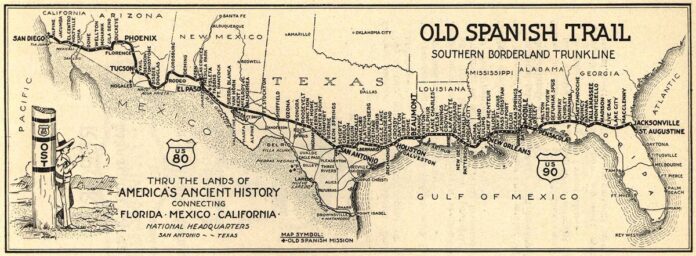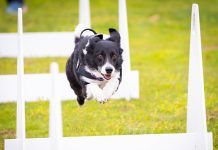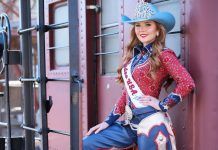Locally, part of the Old Spanish Trail was a historical trade route that connected Sante Fe, New Mexico with Los Angeles and southern California. Approximately 700 miles long, the trail ran through high mountains, deserts, and deep canyons.
It is considered one of the most arduous of all trade routes ever established in the United States. Explored, in part, by Spanish explorers as early as the late 16th century, the trail was extensively used by traders with pack trains from about 1830 until the mid-1850s. Part of that trail comes right through San Diego County, and now preparations are being made for the November Pacific Coast OST Centennial Reenactment, a centennial to be held at the Marriott in El Cajon Nov. 2-5.
OST100 Co-Founder Charlotte Kahl said OST was organized to locate, revitalize and preserve the roadway, businesses, and historical sites of the original 1920s Old Spanish Trail auto highway for a decade long centennial celebration with a 2029 motorcade finale from St. Augustine, Florida to San Diego.
Kahl said that the Old Spanish Trail Centennial Celebration Association is reenacting the celebration held 100 years ago recognizing the success of Col. Ed Fletcher’s work in bringing the Old Spanish Trail transcontinental auto and truck highway from St. Augustine, Florida into San Diego.
Kahl said she is the co-chair of the national group started in San Antonio, Texas in 2004, and they hold local centennial celebrations across the southern route.
“For the past 10 years, the OST100 has been holding local celebrations of local OST groups in various cities across the south,” she said. “On Sept. 17, 1923, Ed Fletcher was very involved in getting a monument placed downtown near Horton Plaza in San Diego. What we are doing, is celebrating the centennial of the placing of that monument.”
Kahl said the motorcade on Saturday morning will be a backcountry drive.
“The OST was overlayed by Olde US Hwy 80, and we take this backcountry drive out to Alpine, then come back on Olde US 80,” she said. “We will stop at Flynn Springs County Park and offer everybody lunch, and then we give them a booklet of all the history they would see if they continued Olde US 80 back to El Cajon. Tavern Road, that leads into Alpine, is part of the OST,” adding that there are still historical sites from the OST along the entire route.
As turning onto Tavern Road to the south and west is the 720-square-mile Cleveland National Forest, named for President Grover Cleveland, created in 1908 as one of President Roosevelt’s first national parks.
Across Tavern Road from Boulder Pass and Carque roads were the large Estates of Charles and John Dewitt. The Alpine Historical Society is developing a parklike setting around the 1899 Adam and Caroline Beaty House and the John DeWitt Museum and Library in the 1896 Dr. Sophronia Home to show the history of the surrounding mountain community. The Alpine Museum will be open from 10 a.m. – noon.
The event begins with a welcome reception at the Olaf Wieghorst Museum in El Cajon where participants are asked to dress casually or in 1920s attire. Thursday’s reception is a meet and greet of the lecturers, authors, and conventioneers, some who are traveling many miles to share their enthusiasm for the Old Spanish Trail auto highway. There will be complimentary hors d’oeuvres and non-alcoholic drinks, and in the spirit of keeping with the prohibition era themed, BYOB alcohol will be disguised in tea cups.
On Friday, Nov. 3, at the Mariott El Cajon, from 8 a.m. – 2 p.m., there is a complimentary breakfast followed by lectures by knowledgeable speakers about the 1920 to provide insight into activities that developed with the paving of the OST auto and truck highways. Speakers include: Robert M. Harding, Jr, writer, lecturer and VP of the Lakeside Historical Society, John W. Murphey, architectural historian and research consultant now based in Santa Fe, New Mexico, Connie Sue Low, Travel and Texas history writer, and Charlotte Kahl, President of the Old Spanish Trail Centennial Association, Bonnie Fletcher, San Diego native, descendant of Col. Ed Fletcher, Trustee of the San Diego History Center and Cochair of the Ed & Mary Fletcher Foundation.
Fletcher, a fourth-generation descendant of Col. Ed Fletcher, who hosted the first San Diego OST conference in 1923 and then vice president of the Old Spanish Trail Association, will be joined by her father, Lawrence B. Fletcher, grandson, and frequent driver for Col. Ed in the early days.
On Friday afternoon there will be exhibits for the public to learn about the Old Spanish Trail auto highway from 1-4 p.m.
On Saturday, Nov. 4, is the Motorcade San Diego County Olde US 90 starting at the Mariott El Cajon at 9 a.m., with a backcountry drive along Olde US Hwy. 80, and many participants drive vintage cars. On Sunday, Nov. 5, author, photographer, lecturer, and Lakeside Historical Society Vice President Robert Harding, Jr. has offered to take a few Old Spanish Trail enthusiasts on a tour to the more challenging portions of the OST hidden beyond hills, bridges, and rough brush. There are also materials from local historians so individuals can take self-guided drives and walks of 1923 commercial buildings and homes that still exist along the OST.
The Old Spanish Trail was an auto trail that once spanned the United States with almost 2,750 miles of roadway from ocean to ocean. It crossed eight states and 67 counties along the southern border of the United States. Work on the auto highway began in 1915 at a meeting held at the Battle House Hotel in Mobile, Alabama; and, by the 1920s, the trail linked St. Augustine, Florida, to San Diego, with its center and headquarters in San Antonio, Texas.














